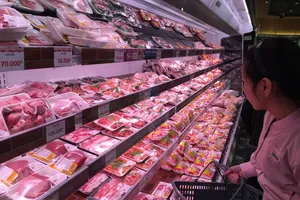
According to the Ministry of Industry and Trade, the ratio of businesses taking advantage of FTA tax incentives reached only 40 percent in the first nine months of 2018 because they have not prepared materials meeting origin standards.
Although the ratio is higher than that in 2017 when it was 35 percent, experts said it still modest compared to potentials from FTAs which the country has spent lot of time and effort to sign.
FTA has strongly increased Vietnamese goods export but the increase has mainly been in the group of foreign direct investment (FDI) firms who contributed 71 percent of the country’s export turnover. FDI sector’s export activities are leading the market, proving that export turnover increase has most benefited FDI sector.
Meantime, Vietnamese firms have been unable to take advantage of the incentives. Two years after Vietnam-South Korea FTA took effect, the export value by Vietnamese enterprises has been lower than that by Korean firms who are investing and operating in Vietnam in the wooden industry. FDI firms know thoroughly standards of wooden products in the Korean market so they have got the best out of technical and origin regulations to enjoy the incentives.
Experts say that some Vietnamese businesses have been vague about regulations to enjoy FTA incentives. If they do not change in the upcoming time, the danger of missing FTA incentives will be clearer.
Mr. Choi Dae Kyoo, an expert in tax and customs from Vietnam-South Korean FTA Support Center, said that one of reasons for Vietnamese businesses’ low exploitation of FTAs is that they have been short of understanding about origin management methods and failed to meet relevant requirements.
By the end of 2017, over 200 nations and territories had trade relations with Vietnam. In 28 markets bringing the export turnover of over US$1 billion, five topped $5 billion and four exceeded $10 billion including the US, China, Japan and South Korea.
Export turnover was estimated to near US$170 billion in the first nine months this year, up 15 percent over the same period last year.
























